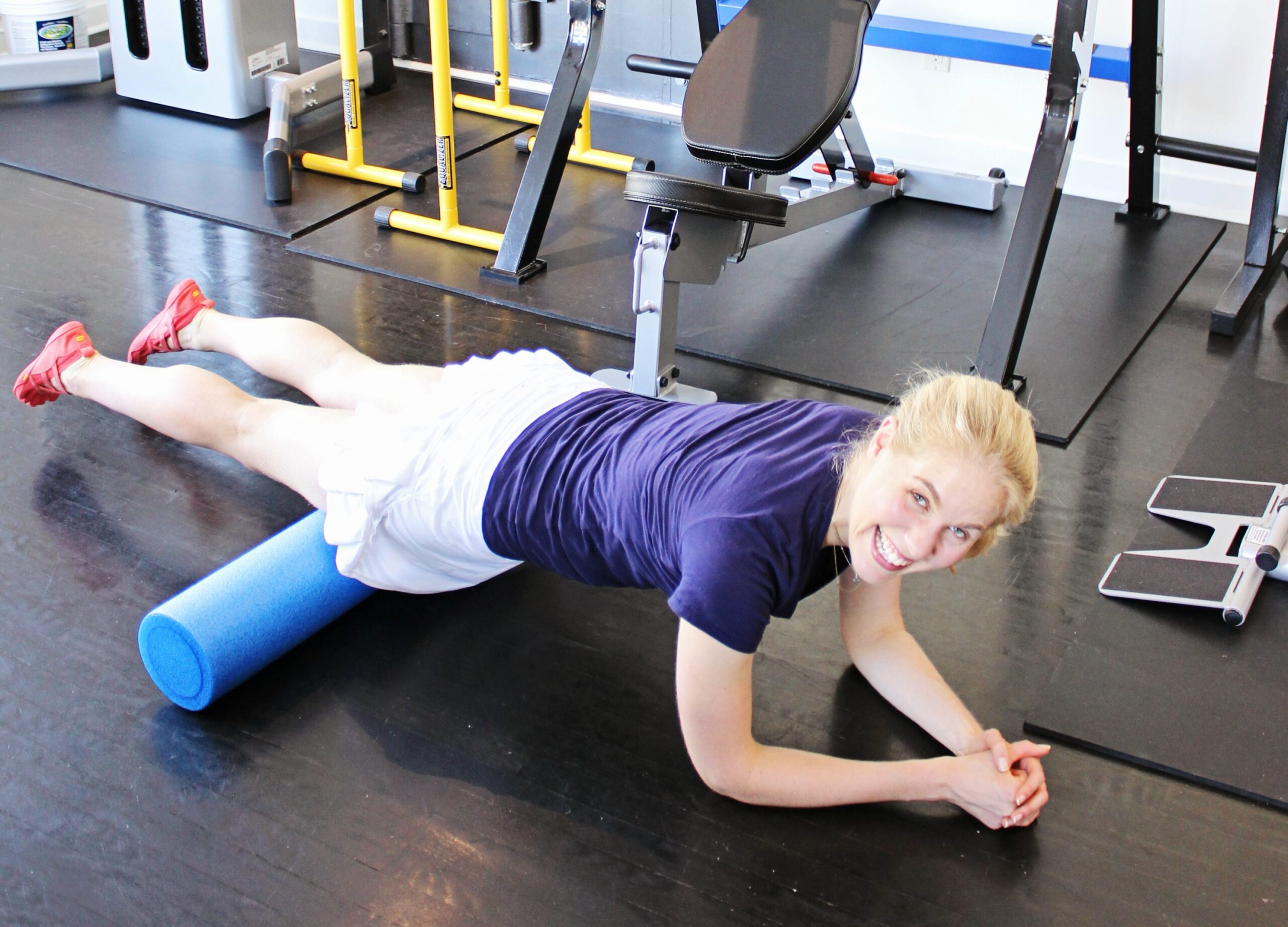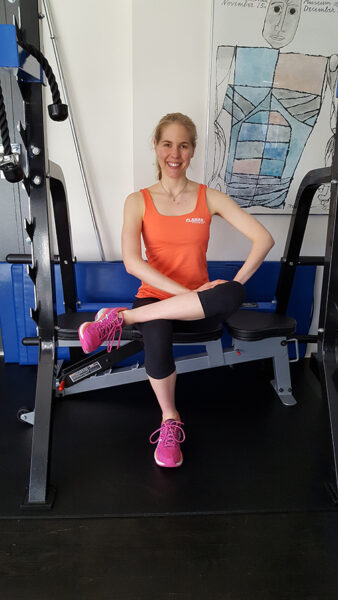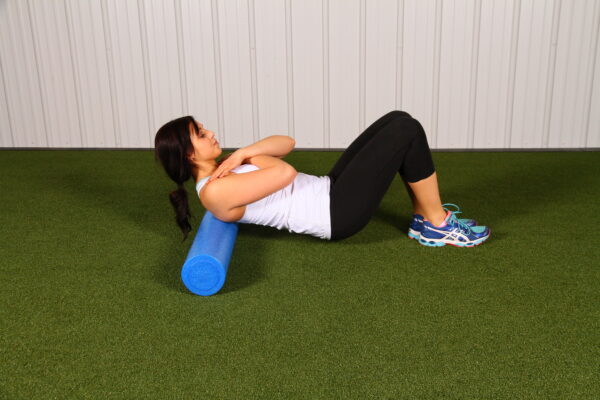Why you have to cool down when you work out

I get it. When you finish your workout, you just want to get on with life. It is natural to think, “Phew … done … SHOWER.” I have been there — many times. I never want to complete a full cool down. I did my workout. I want to get on with my day (and did I mention shower? I love the post-workout shower almost more than the workout).
The problem is, there is a reason why a proper workout has been broken down into three main components — warm-up, main workout, cool-down. Your body and brain require the gradual decrease in effort to come back to homeostasis. Put another way, a proper cool-down helps you not feel like crap for the rest of the day. Stop too quickly and you risk feeling nauseated — plus it is not good for your heart — and skipping the stretch puts you at risk of feeling sore for days.
You can’t just stop.
So far in my “How to” series I have covered everything from how to use dumbbells to how to use various cardio equipment — all very active routines. Today’s “how to” lesson puts the final bow on the very nice present that is your workout!
The cool-down — A general overview
“Musts”
Give yourself 3 to 8 minutes to gradually decrease the intensity of your motion. The harder the workout, the longer the cool-down. After a light walk you need almost no cool down. After intense running intervals you need 5 to 10 minutes in which you gradually move from normal running, to jogging, to walking.
If you have a pre-existing injury, use the cool-down to make sure you complete the appropriate physio exercises. Tight quads? Stretch them. Tendency to over use your hamstrings? Roll them. Have a history of plantar fasciitis? Use the small ball on your feet and roll out your calves. Know your body. Do you.
If the workout left you aware of any one part of your body, take a moment to appropriately stretch or roll it. If the body part feels tight, stretch. If it feels strained, roll.
If you’re chronically stiff, take the opportunity to stretch and roll your entire body — your body needs it. If you are chronically hypermobile, don’t overstretch. Roll any muscle that feels like it needs a massage. Stretch any specific muscles that feel in need. Don’t overstretch. Aim for a 4 out of 10 intensity.
A key concept is that you always do dynamic stretches before you work out and static stretches afterward. Why? Dynamic mobility exercises involve motion and, therefore, prime the body for motion. Static stretches are, well, static. Thus, they cool down the nervous and musculoskeletal systems. For example, walking hip flexor stretches should be done prior to motion and static hip flexor lunge stretches after motion.
A great opportunity to …
The cool-down is a great opportunity to take a mindfulness moment. Lie on the floor or on a foam roller and breathe. Concentrate on your breathing. Relax your body. Breathe in and out. Connect your mind to this pattern. When you get lost in thought, no problem — just note it and come back to your breath. If you have relentless “loops” of anxiety or negative self-talk, take the moment to note 2 or 3 things you did well in the workout or something you are grateful for. It could be as simple as, “I am proud of myself for doing the workout … I wanted to ditch.”
A Few of my Favorite Moves
Stretches
Hold each stretch for a minimum of 30 seconds. The intensity of a stretch should feel roughly like a 4 out of 10. Never stretch so far that you experience pain.

stretch: While sitting, place your right ankle on top of your left knee. Push down gently on your right thigh until you feel a stretch in your bum. Switch sides and repeat.
Standing lunge hip-flexor stretch: Step your right leg behind you. Keep both feet facing forward and bend your knees slightly. Tuck your pelvis so your right hip bones move toward your ribs. Feel the stretch up the front of your right thigh. Hold for 30 seconds before switching legs.
Standing calf stretch: Stand on a step with the ball of your right foot on the edge. Let your right heel fall toward the ground. Hold for 30 seconds before switching legs.
If one side of your body is noticeably less flexible, stretch the tight side first, then the looser side. Finish by stretching the tight side once more.
Foam roller
Melt away calf tightness: (As a runner this is SO yummy.) Sit on the floor with the roller under your calves, perpendicular to your body. Lift your bum slightly off the ground. Roll yourself forward and backward so the roller moves up and down your lower legs. Experiment. Rotate your legs side to side slightly as you move. This is called cross-fibering. Pinpoint a few trigger points.

Upper-back relief: (Do you sit at a desk? If so, this is for YOU.) Start on the floor with your bum on the ground and the roller under your upper back, perpendicular to your body, head resting in your hands. Lift your hips up. Roll your body forward and backward so the roller moves up and down your back. Keep your core engaged.
For more “fun” foam roller exercises see this “How to use a foam roller” blog.
Small ball
I love the yoga tune-up balls — they are hard enough to be effective, but soft enough not to cause pain. For a less expensive alternative, try a lacrosse ball (press gently — this is intense) or a tennis ball.
Treat your feet: Place a ball under the ball of the little toe. Roll it lengthwise up and down the outside of your foot between the little toe and the heel. Move it under the ball of the big toe. Roll it lengthwise up and down the inside of your foot between the big toe and the heel. Finally, curl all your toes around the ball. Release and spread your toes.
When using the ball and roller, when you find a trigger point, stop and put gentle pressure down into the tissue. Expect to feel sensations as the roller or ball uncovers adhesions and possibly scar tissue. I call this “positive pain.” Never roll though “negative pain.” Your body shouldn’t hurt more after you roll; the pain should never take your breath away or feel like electricity or numbness.
Final thoughts
If you’re stretching to decrease aches and pains and increase mobility, keep in mind that you didn’t become chronically stiff and uncomfortable overnight. Like drops in a bucket, small amounts of self-care OR small amounts of “body abandonment” add up. By skipping your cool-down, you have been an absent “parent” to yourself for years. Now is the time to parent yourself. To be consistent. To build credit. Change takes time — and consistency.
A healthier body is out there … now go create it one cool-down at a time!
Originally published at FLAMANFITNESS












